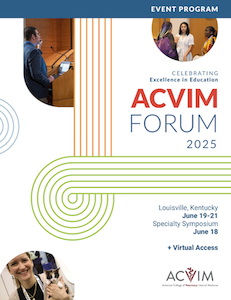Cardiology
(C20) Transcriptomic Insights into Hypertrophic Cardiomyopathy in Feline Hearts
Thursday, June 19, 2025
9:30 AM - 9:45 AM ET
Location: Exhibit Hall Poster Park - Kiosk 9

Ritu Verma, MS (she/her/hers)
PhD student
University of Guelph
Kitchener, ON, Canada
Research Abstract - ePoster Presenter(s)
Abstract:
Background: Hypertrophic cardiomyopathy (HCM) is the most common heart disease in cats and has a largely unknown pathogenesis. Hypothesis/
Objectives: The objective was to analyze transcriptomic (mRNA) differences in the hearts of male cats with HCM and healthy male cats of similar age to identify dysregulated genes and pathways. Animals: 7 left ventricle (LV) and 7 left atrium (LA) samples from male cats with HCM (mean age 10 years, range 2-15 years), and 5 LV and 5 LA samples from male adult cats (mean age 7 years, range 2-12 years) without cardiac disease were collected immediately after their death.
Methods: RNA sequencing was performed, followed by differentially expressed gene (DEG) analysis using Ingenuity Pathway Analysis (IPA) and Gene Set Enrichment Analysis (GSEA). DEGs were identified with a log2 fold change (log2Fc) of ±0.585 and a false discovery rate (FDR) < 0.05 in IPA. For GSEA, pathways with an FDR < 0.25 were considered significant.
Results: The HCM myocardium showed region-specific pathway dysregulation that might be involved in hypertrophic remodelling. In the HCM LV, angiogenesis, mitochondrial function, and glucose metabolism pathways were inhibited, and inflammation and collagen catabolism were activated. In the HCM LA, autophagy and proteolysis pathways were suppressed, while calcineurin-NFAT signalling, a pathway involved in hypertrophic growth, and apoptosis pathways were activated. Conclusions and Clinical Relevance: The observed pathways are chamber-specific and reveal insights into the molecular mechanisms involved in HCM pathogenesis. This may allow the identification and subsequent modulation of signalling cascades involved in disease processes
Background: Hypertrophic cardiomyopathy (HCM) is the most common heart disease in cats and has a largely unknown pathogenesis. Hypothesis/
Objectives: The objective was to analyze transcriptomic (mRNA) differences in the hearts of male cats with HCM and healthy male cats of similar age to identify dysregulated genes and pathways. Animals: 7 left ventricle (LV) and 7 left atrium (LA) samples from male cats with HCM (mean age 10 years, range 2-15 years), and 5 LV and 5 LA samples from male adult cats (mean age 7 years, range 2-12 years) without cardiac disease were collected immediately after their death.
Methods: RNA sequencing was performed, followed by differentially expressed gene (DEG) analysis using Ingenuity Pathway Analysis (IPA) and Gene Set Enrichment Analysis (GSEA). DEGs were identified with a log2 fold change (log2Fc) of ±0.585 and a false discovery rate (FDR) < 0.05 in IPA. For GSEA, pathways with an FDR < 0.25 were considered significant.
Results: The HCM myocardium showed region-specific pathway dysregulation that might be involved in hypertrophic remodelling. In the HCM LV, angiogenesis, mitochondrial function, and glucose metabolism pathways were inhibited, and inflammation and collagen catabolism were activated. In the HCM LA, autophagy and proteolysis pathways were suppressed, while calcineurin-NFAT signalling, a pathway involved in hypertrophic growth, and apoptosis pathways were activated. Conclusions and Clinical Relevance: The observed pathways are chamber-specific and reveal insights into the molecular mechanisms involved in HCM pathogenesis. This may allow the identification and subsequent modulation of signalling cascades involved in disease processes


